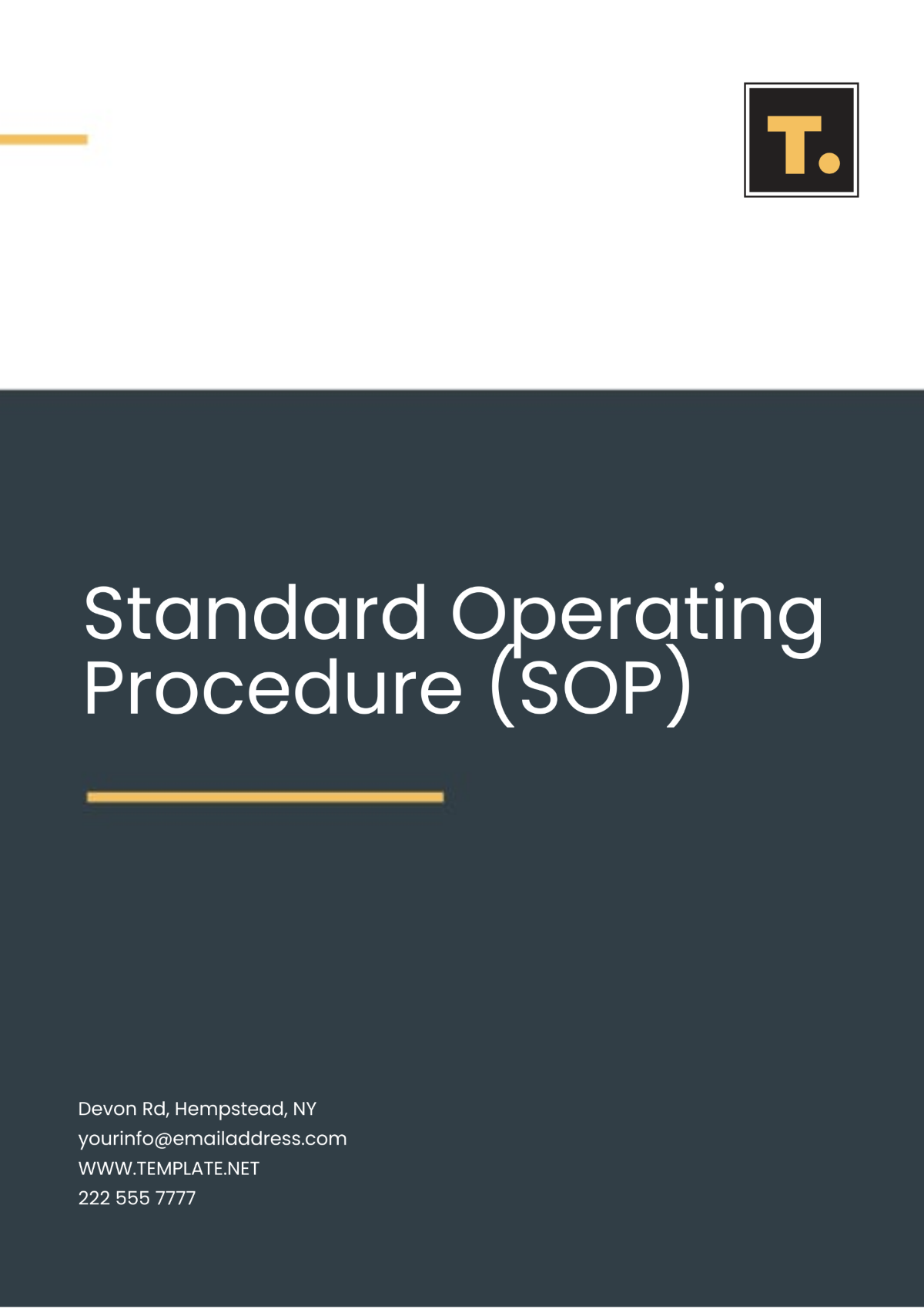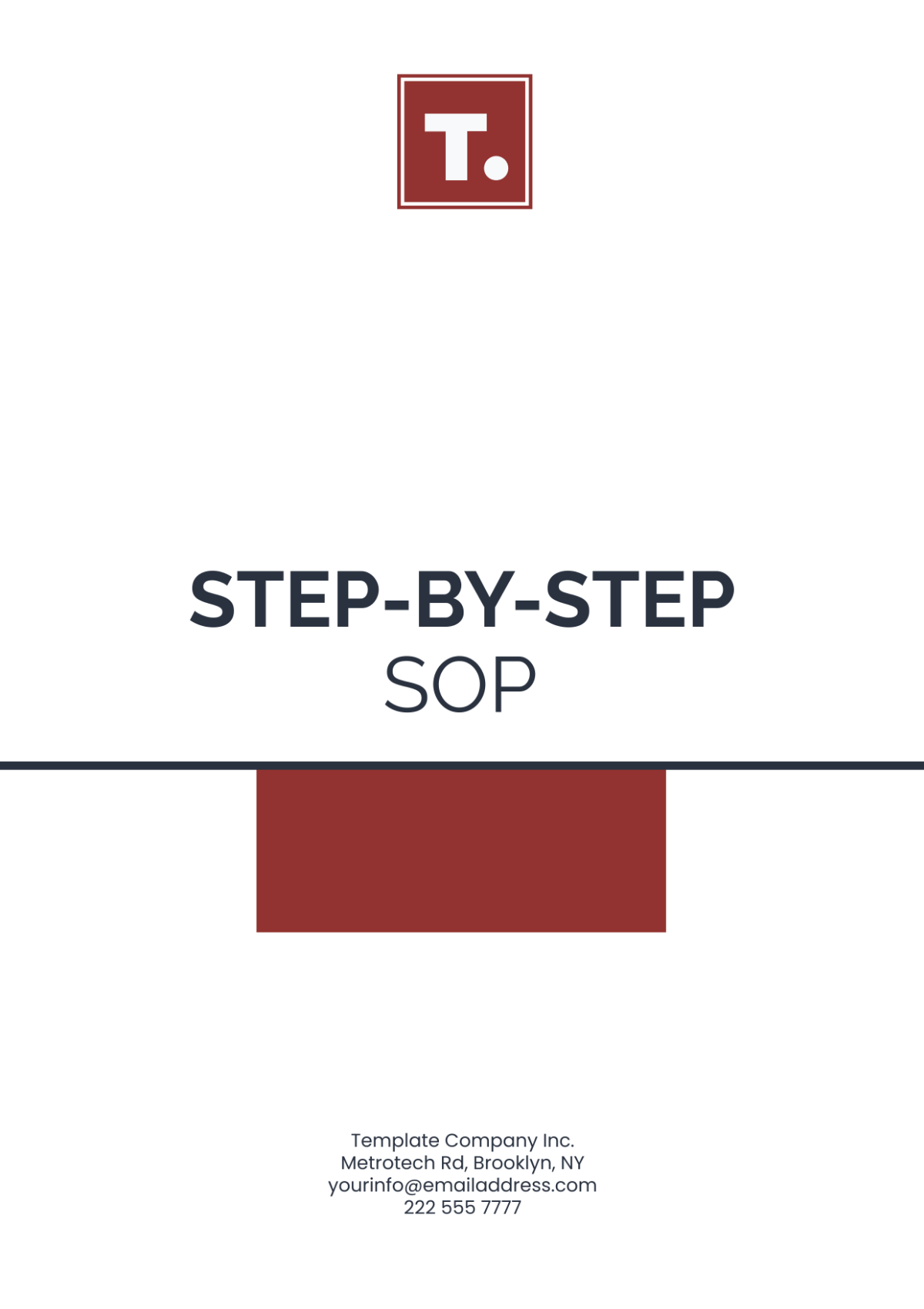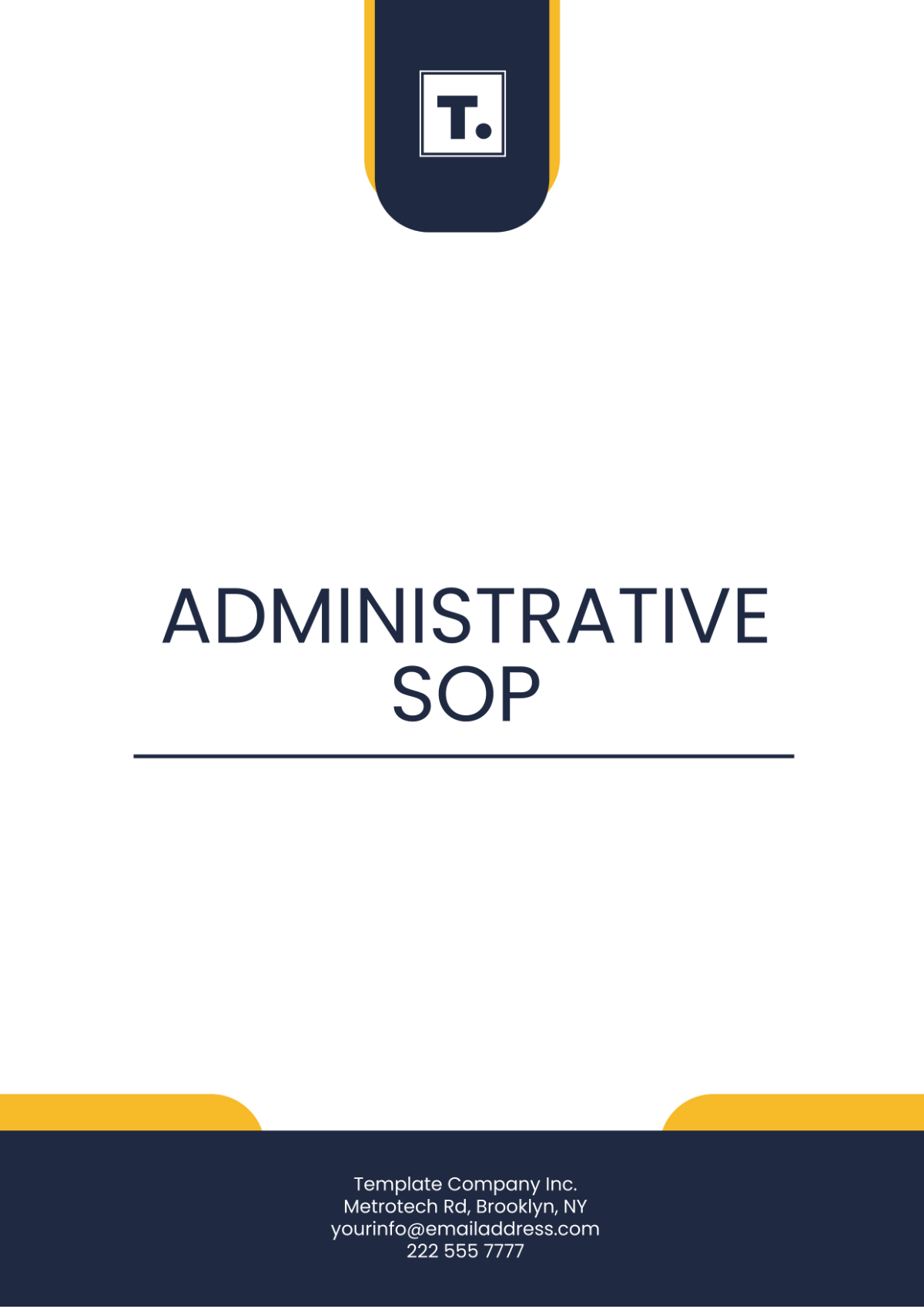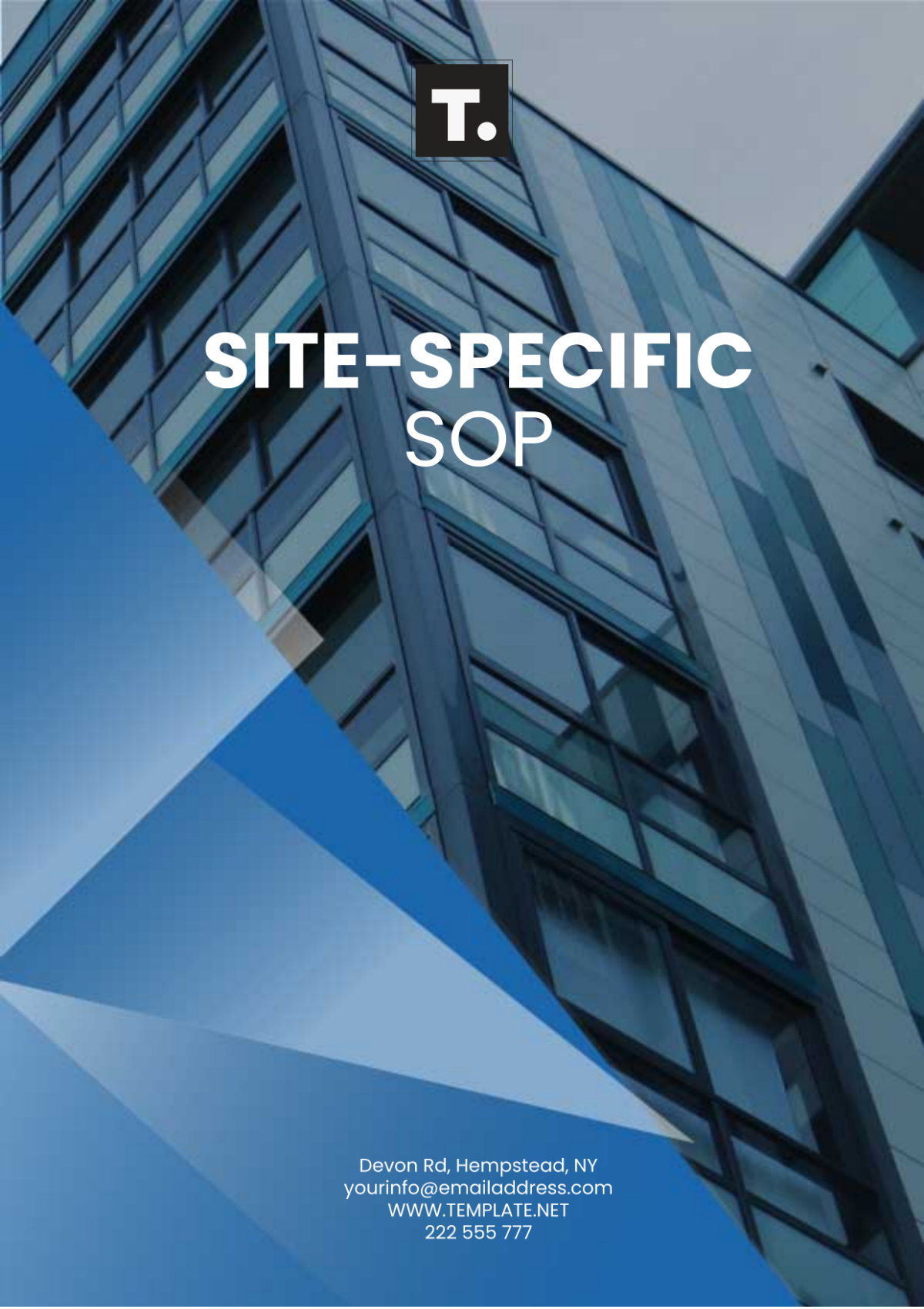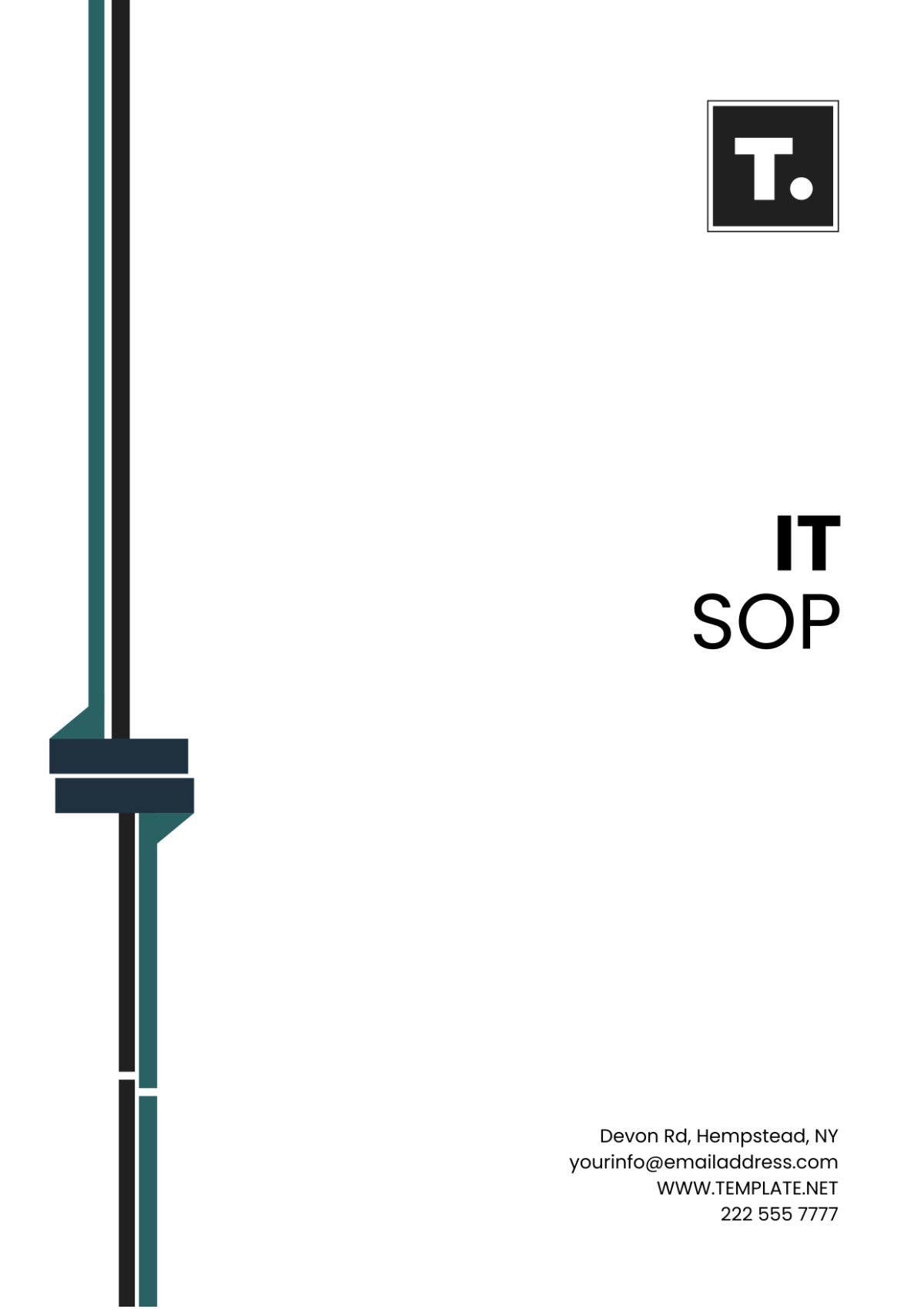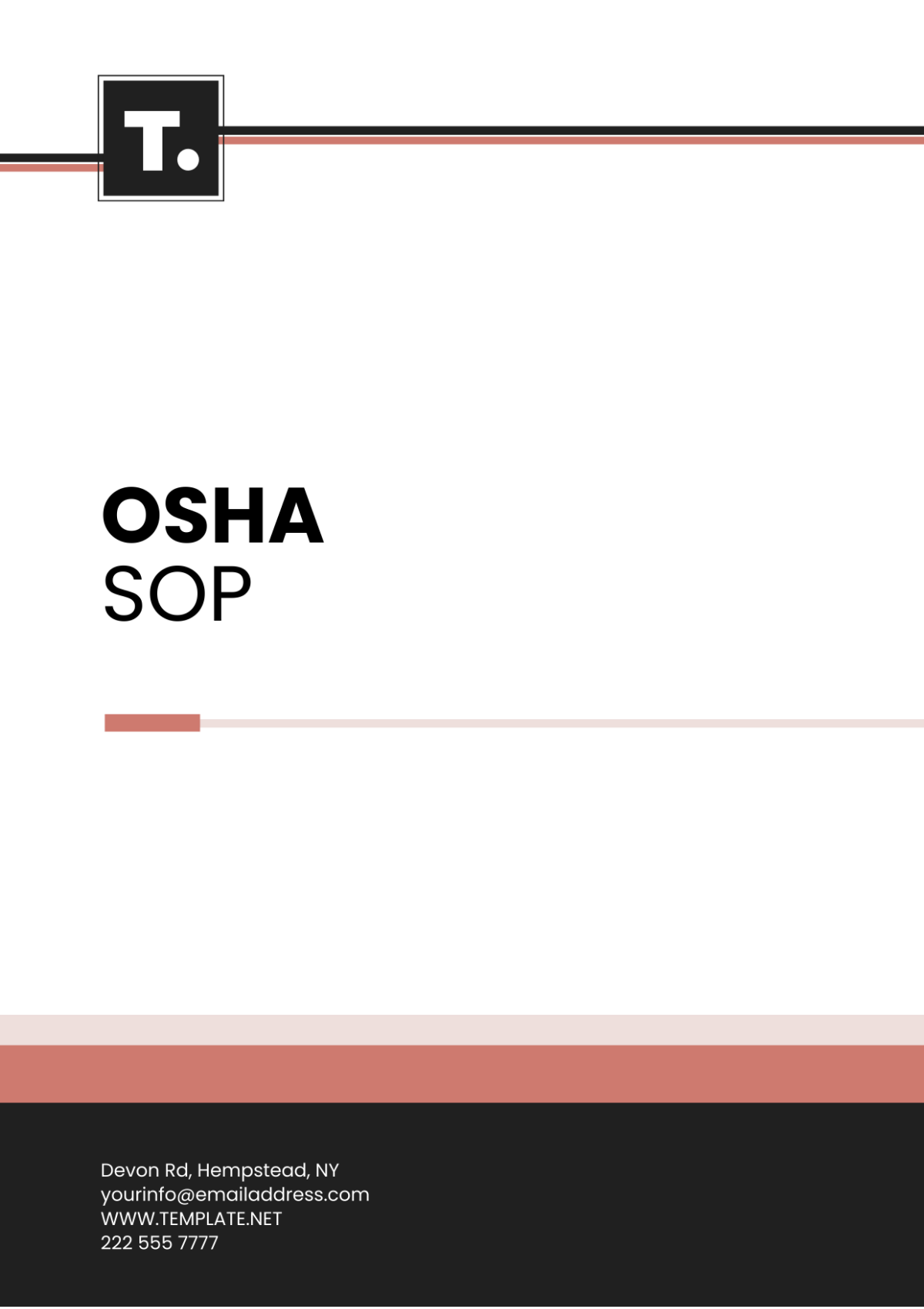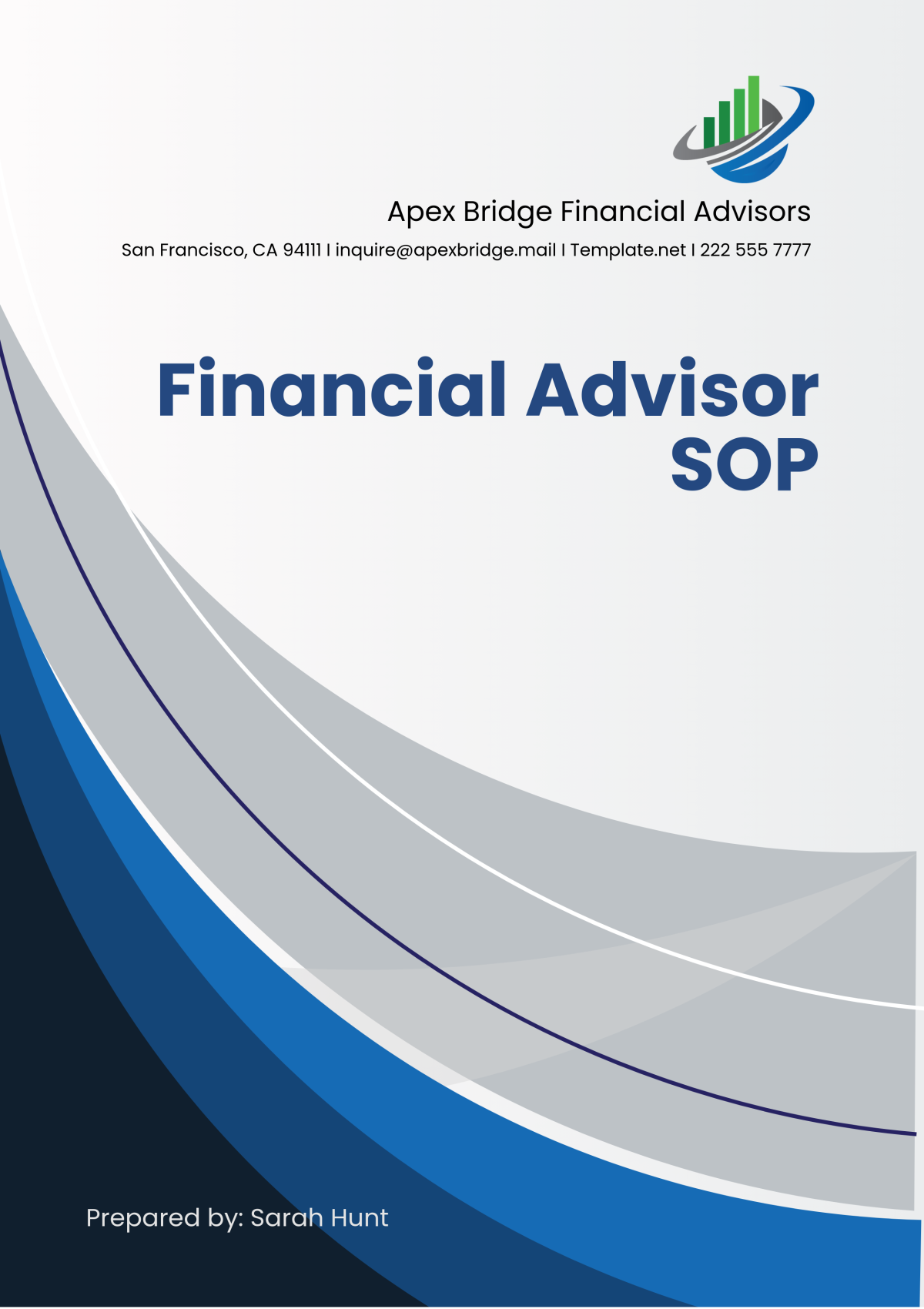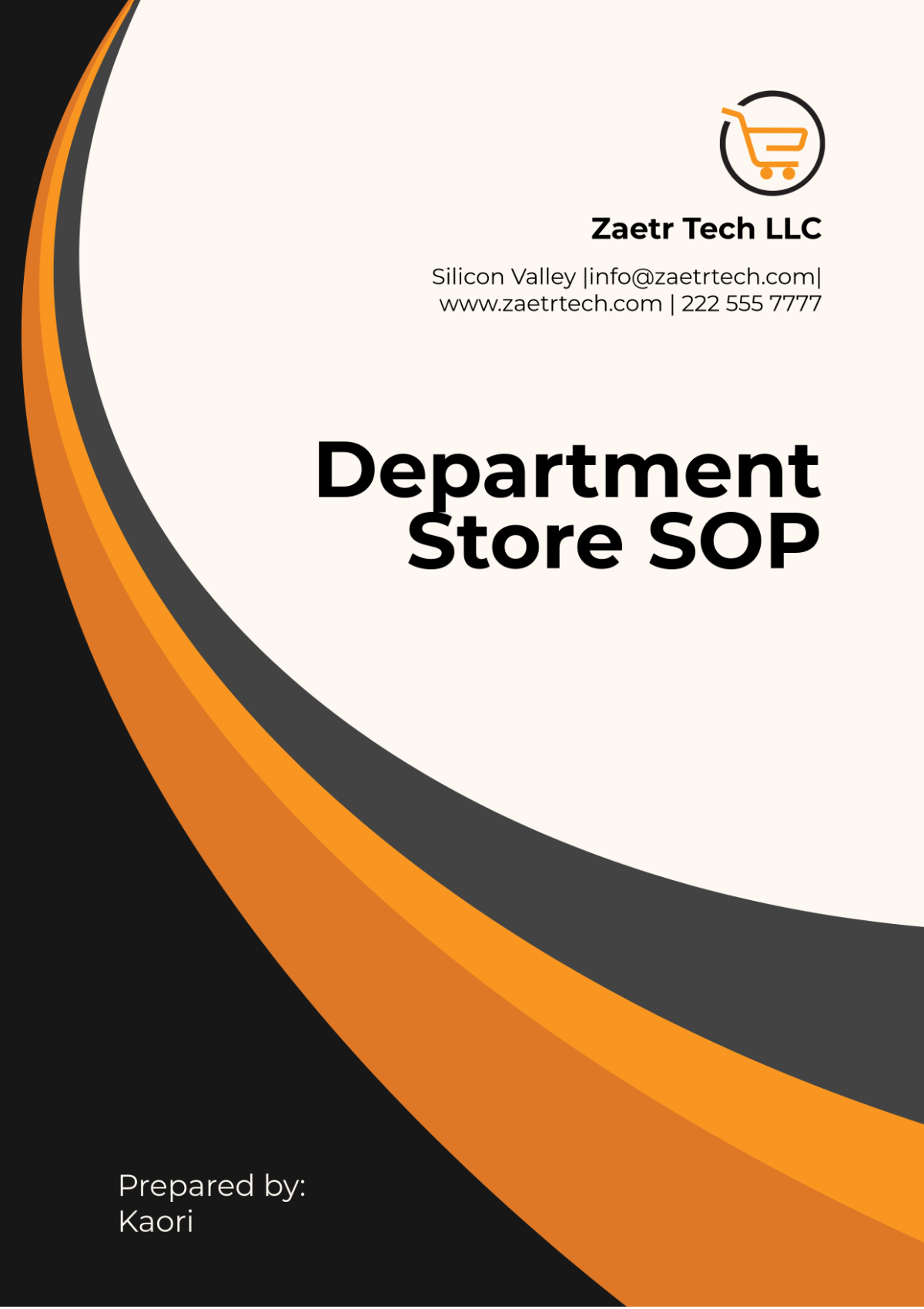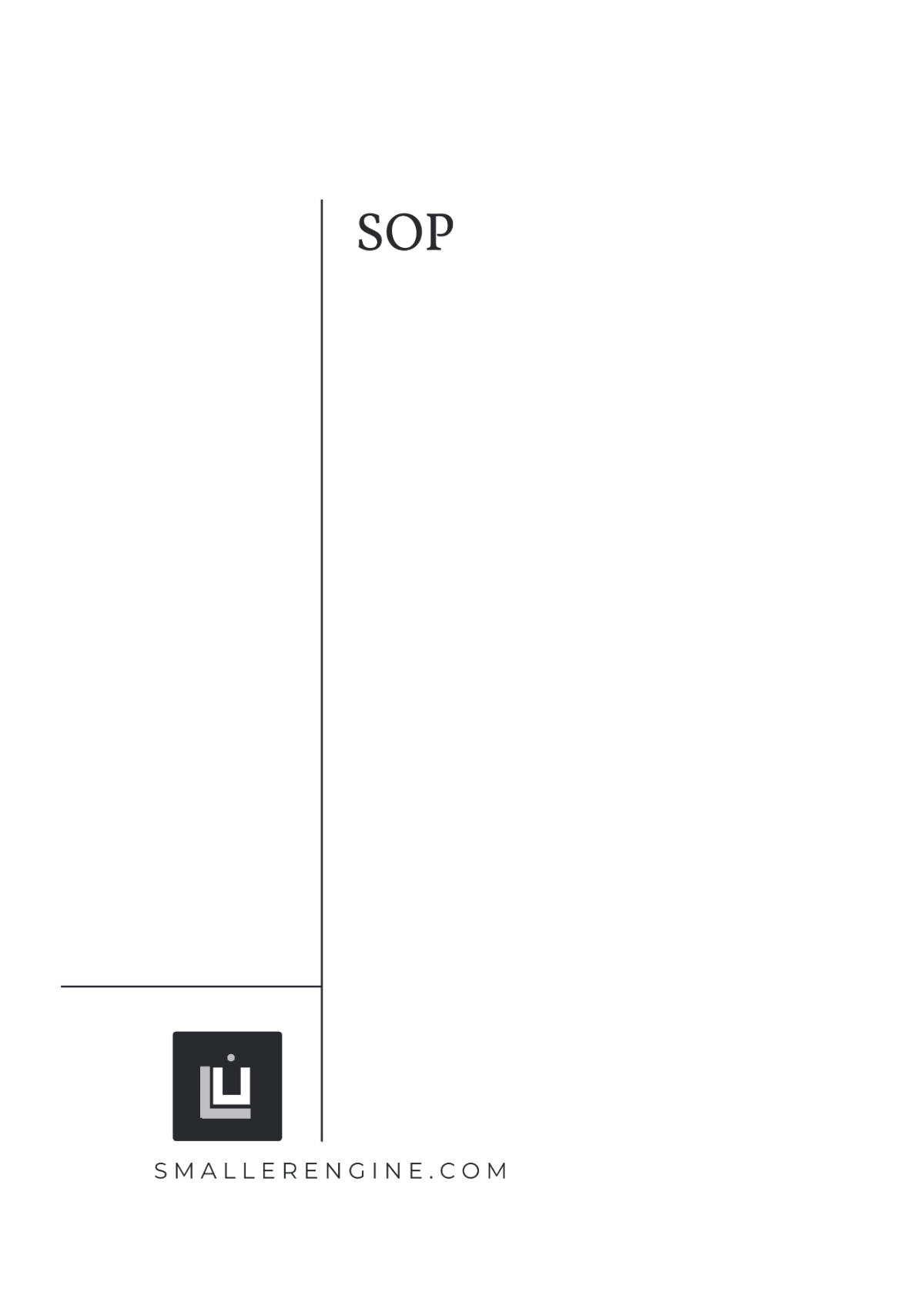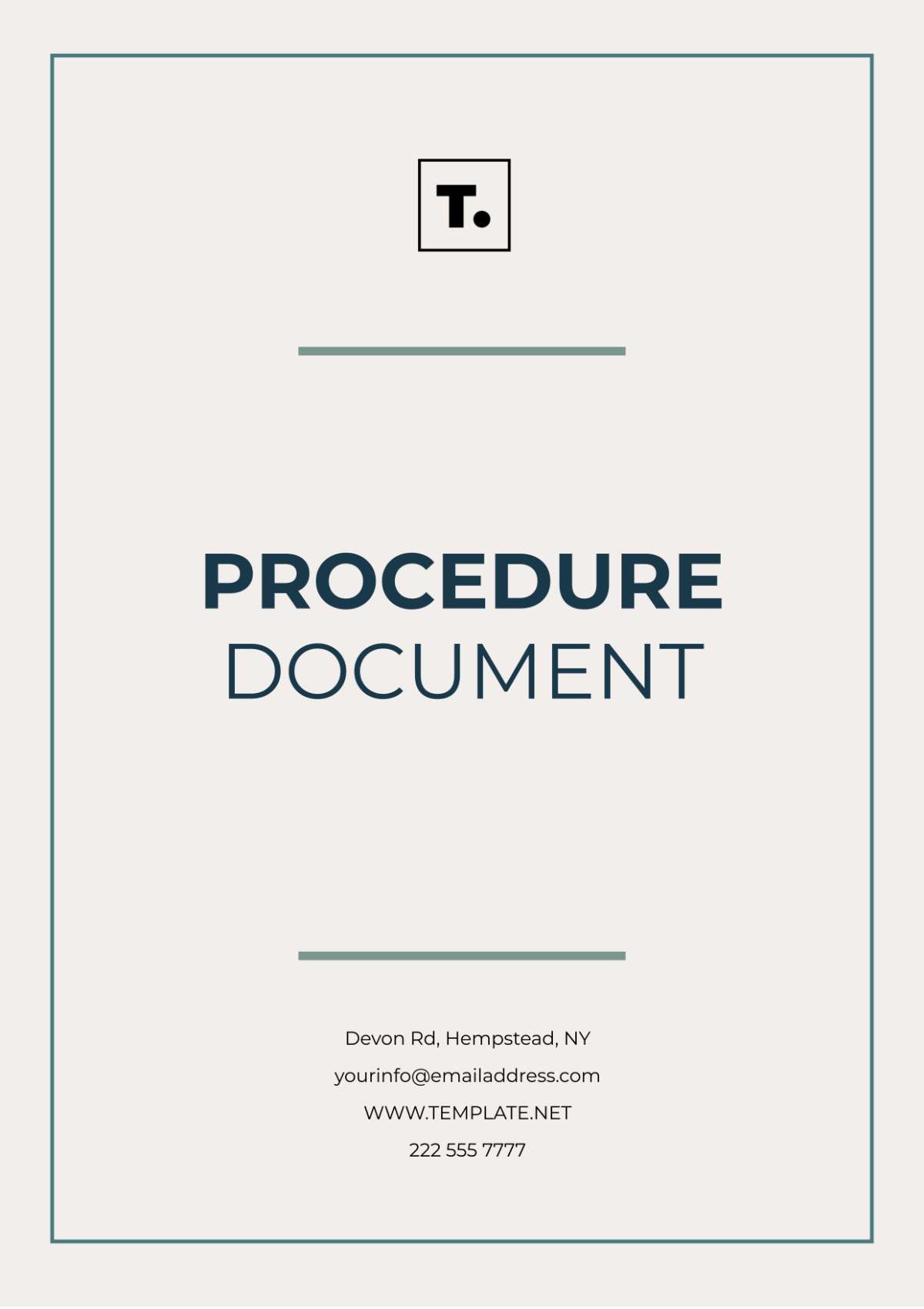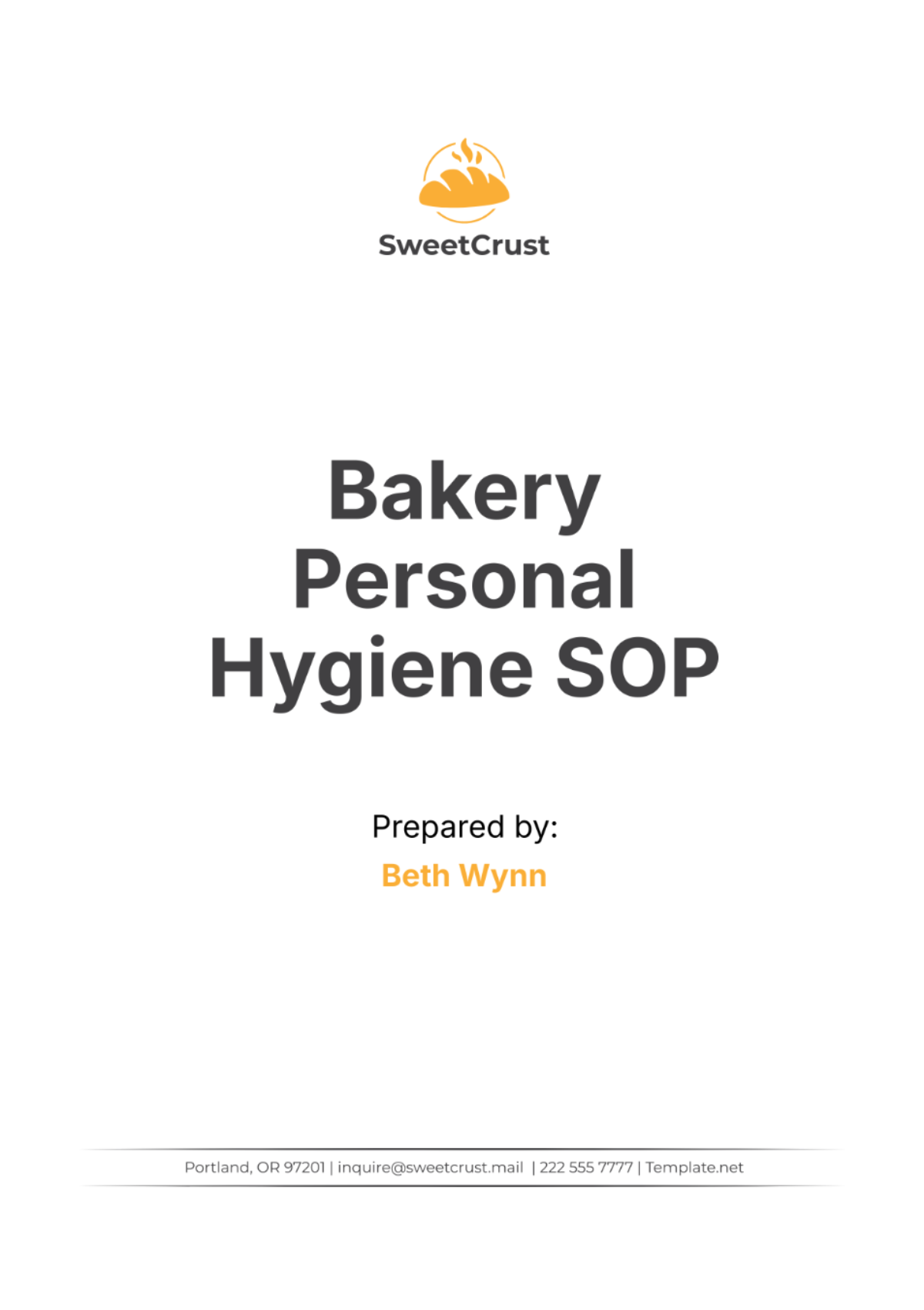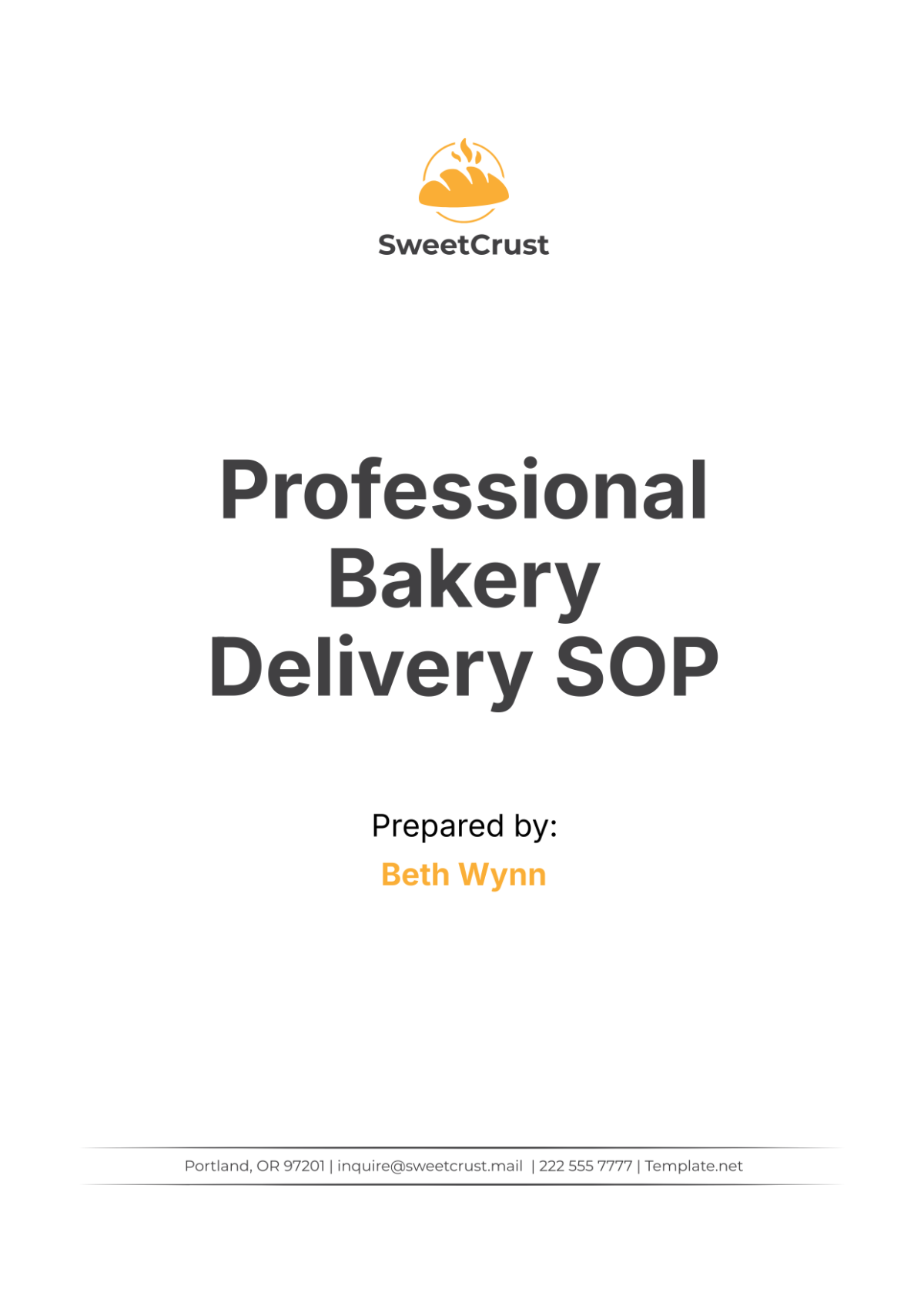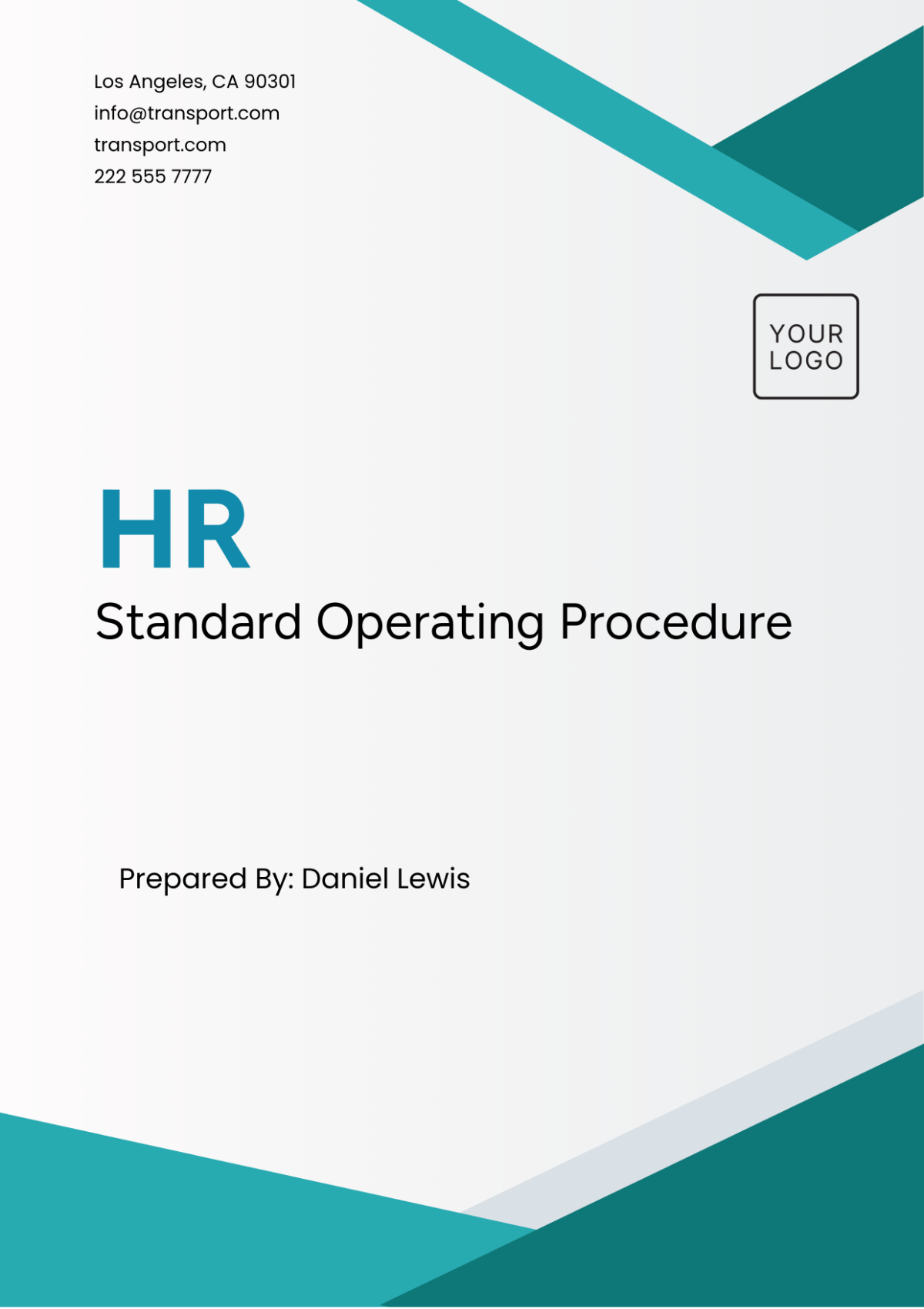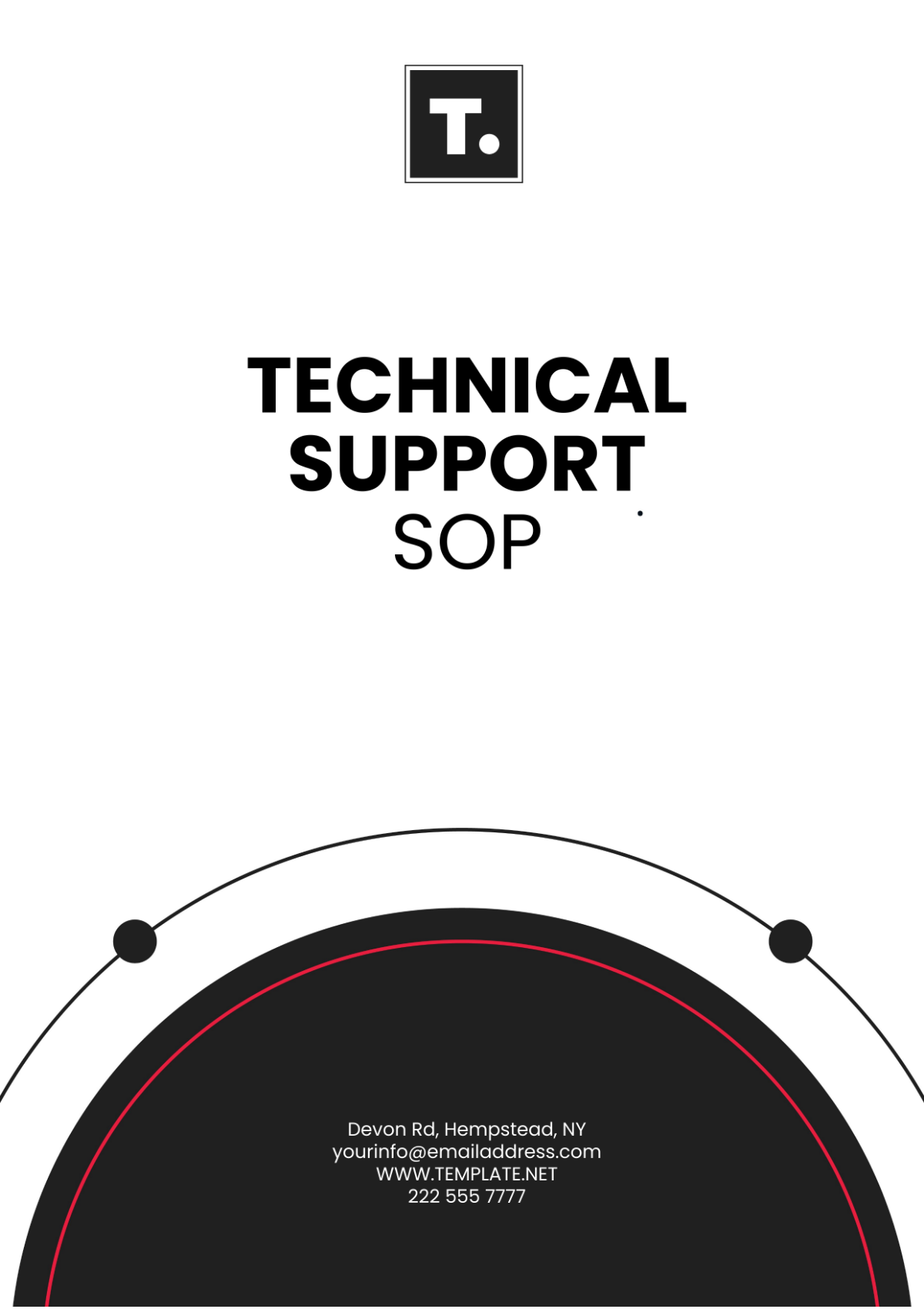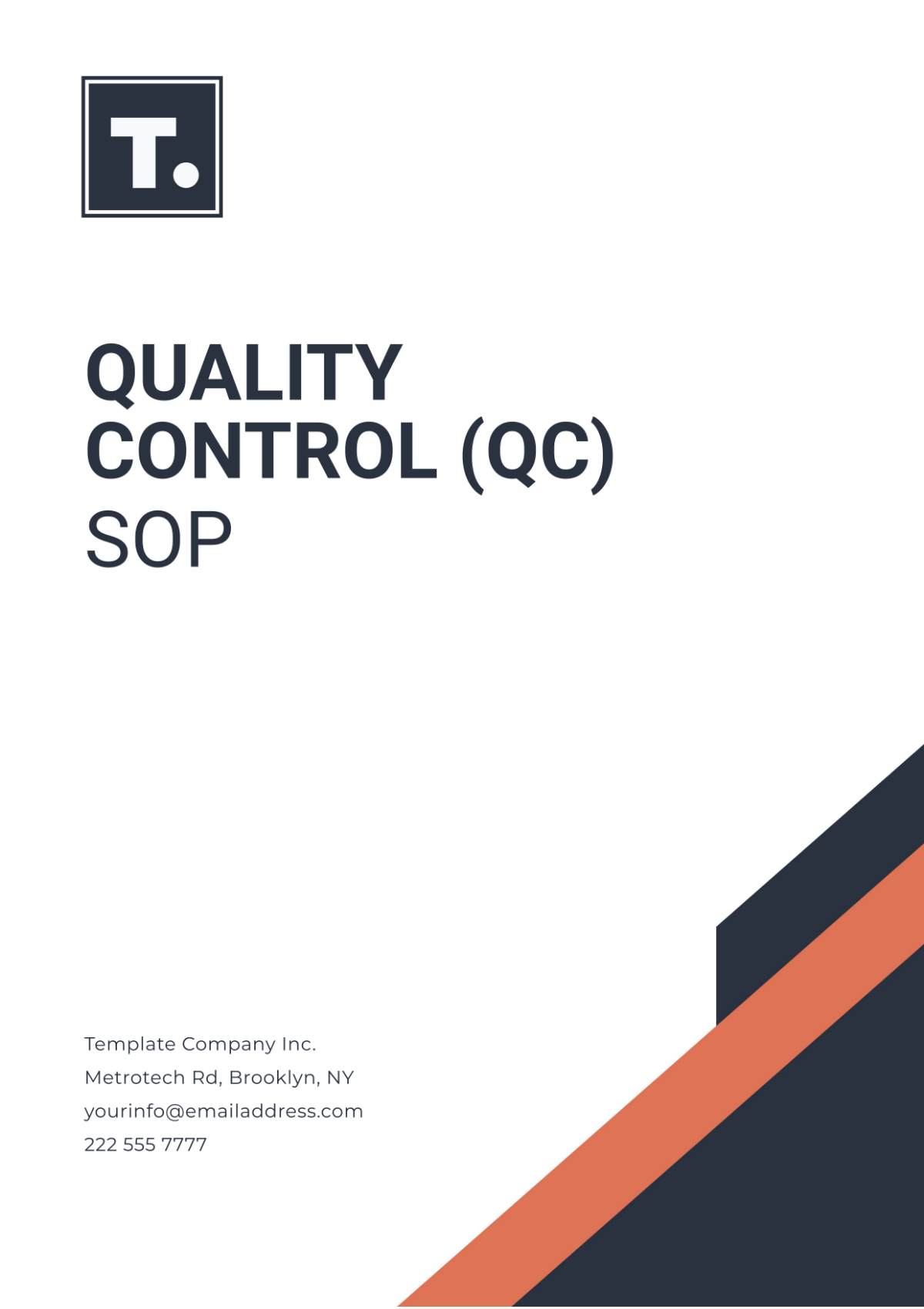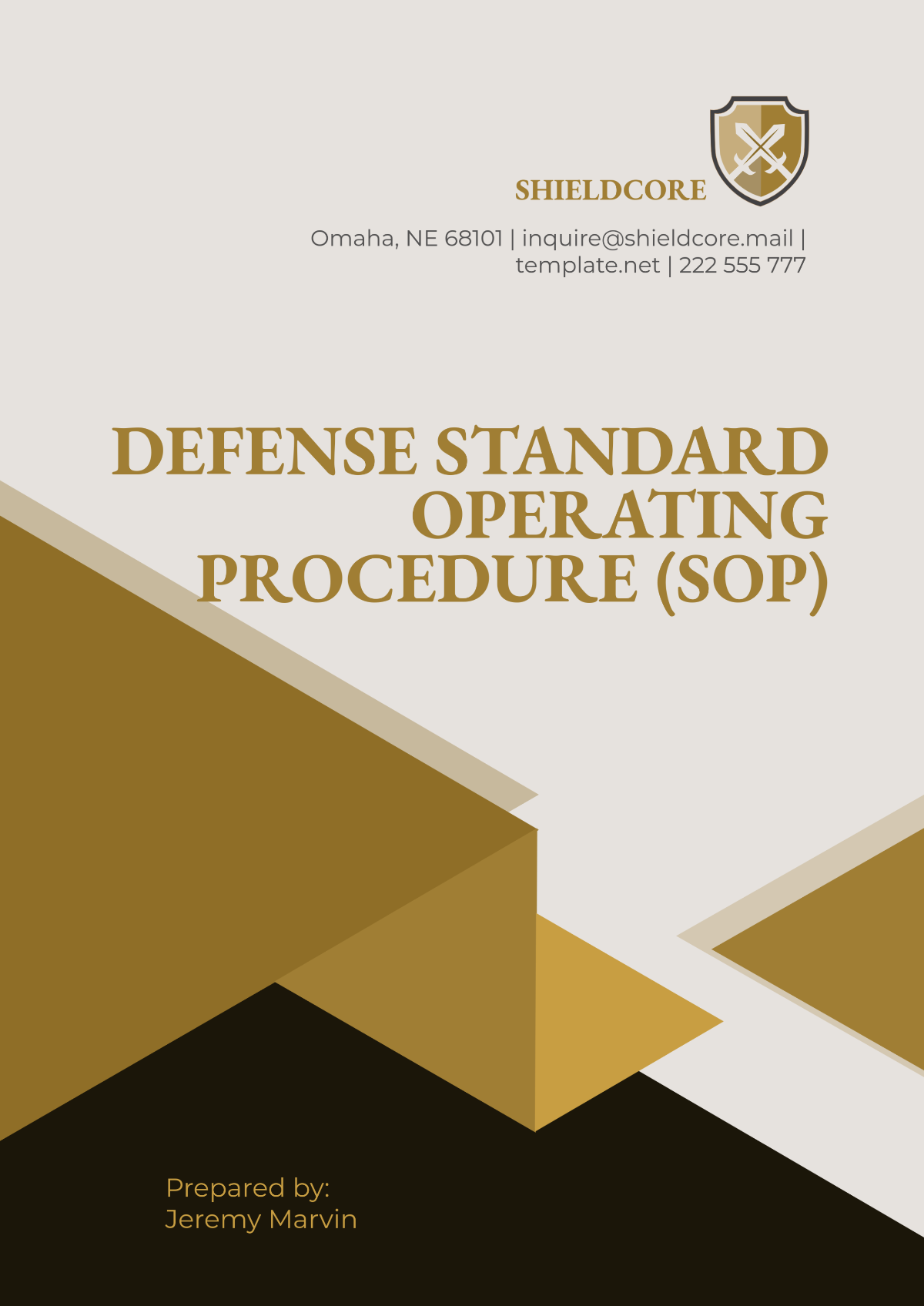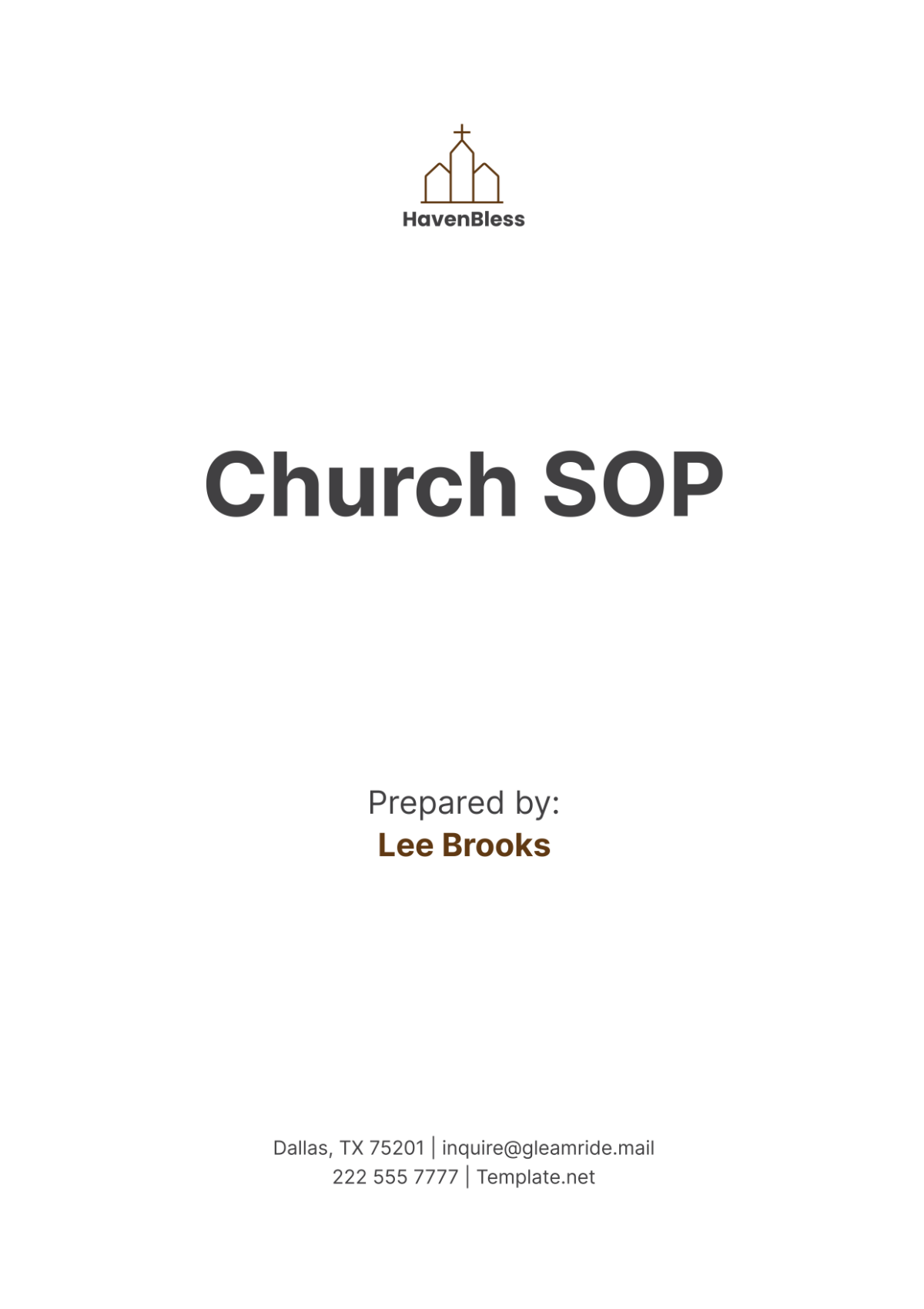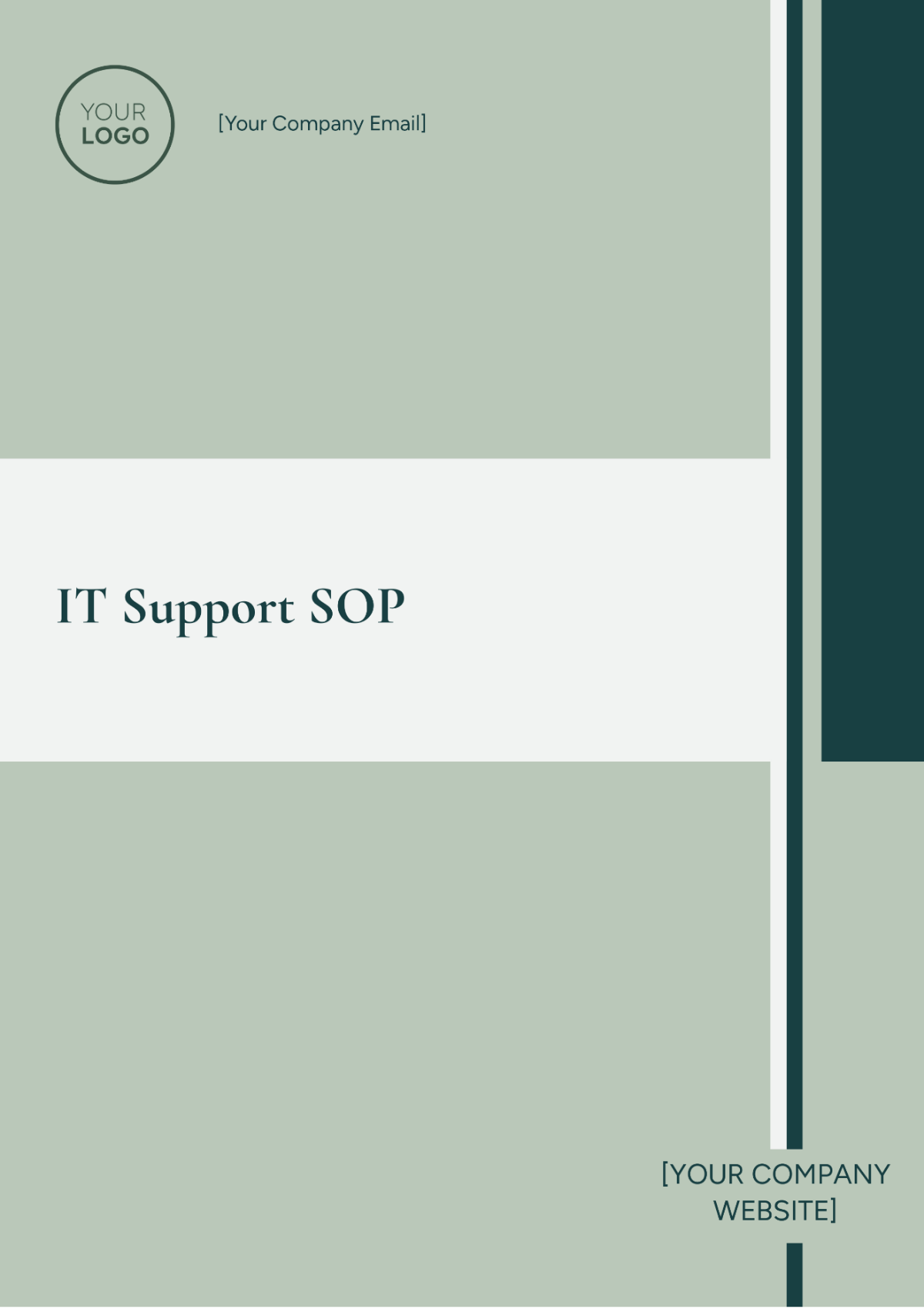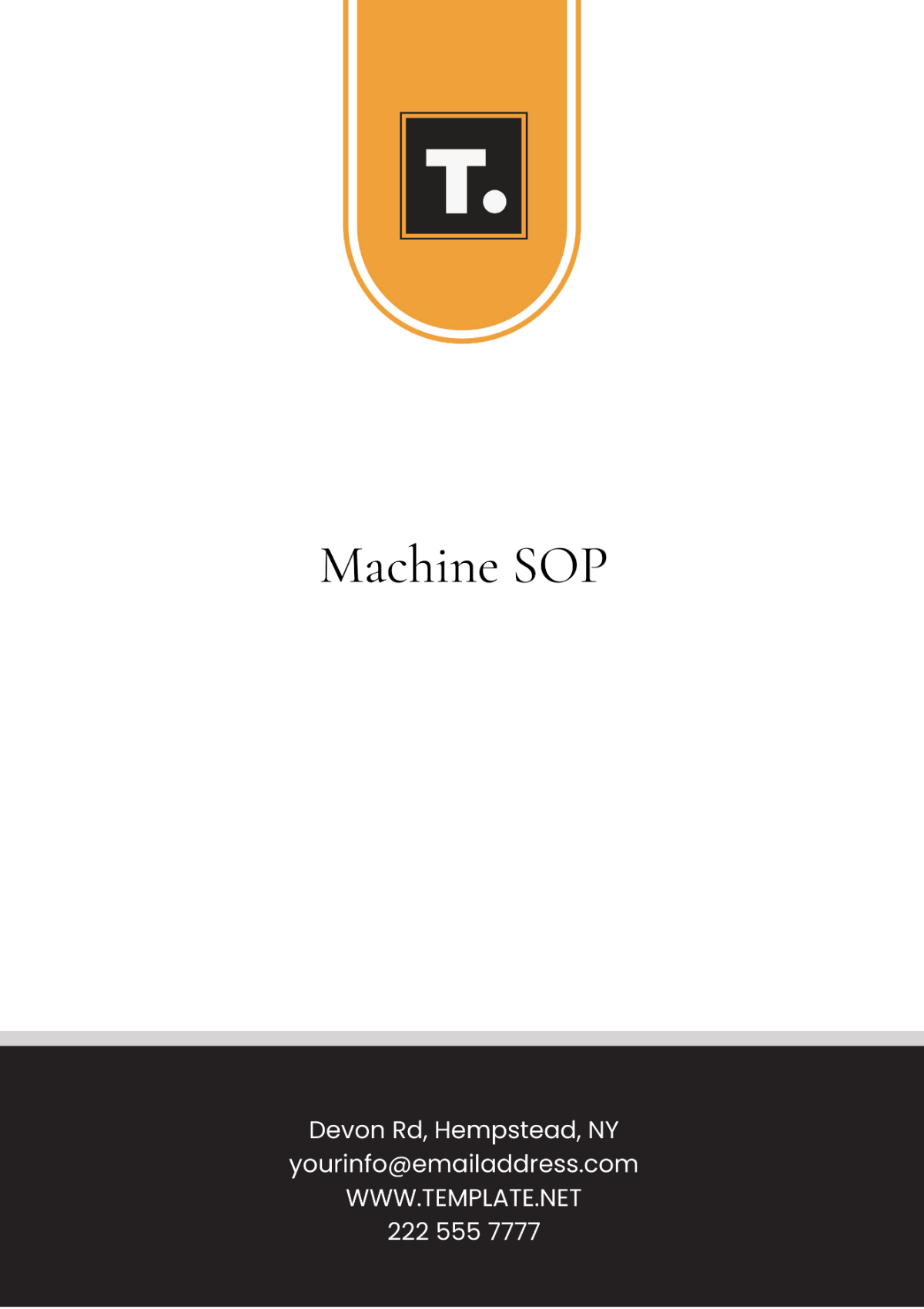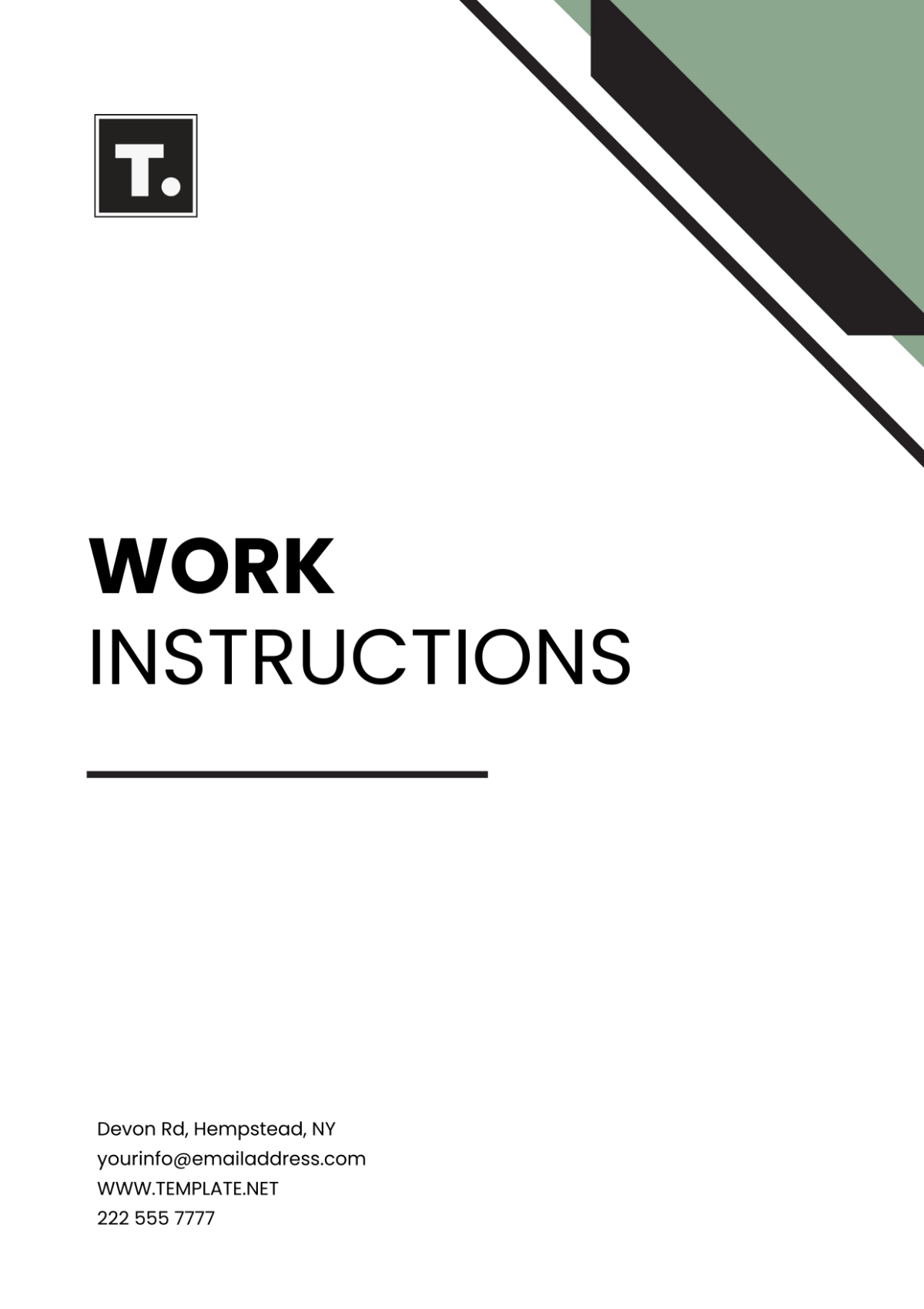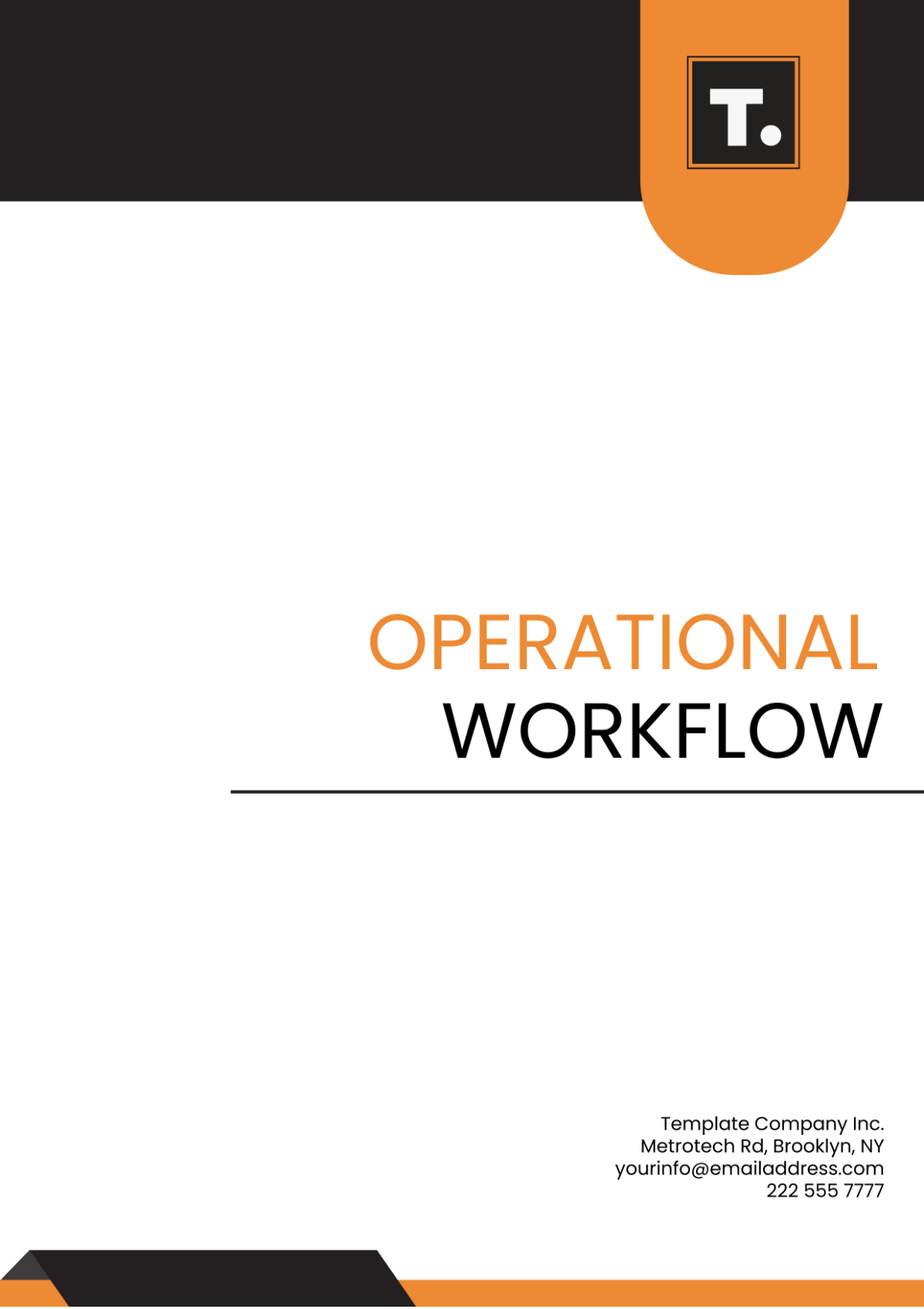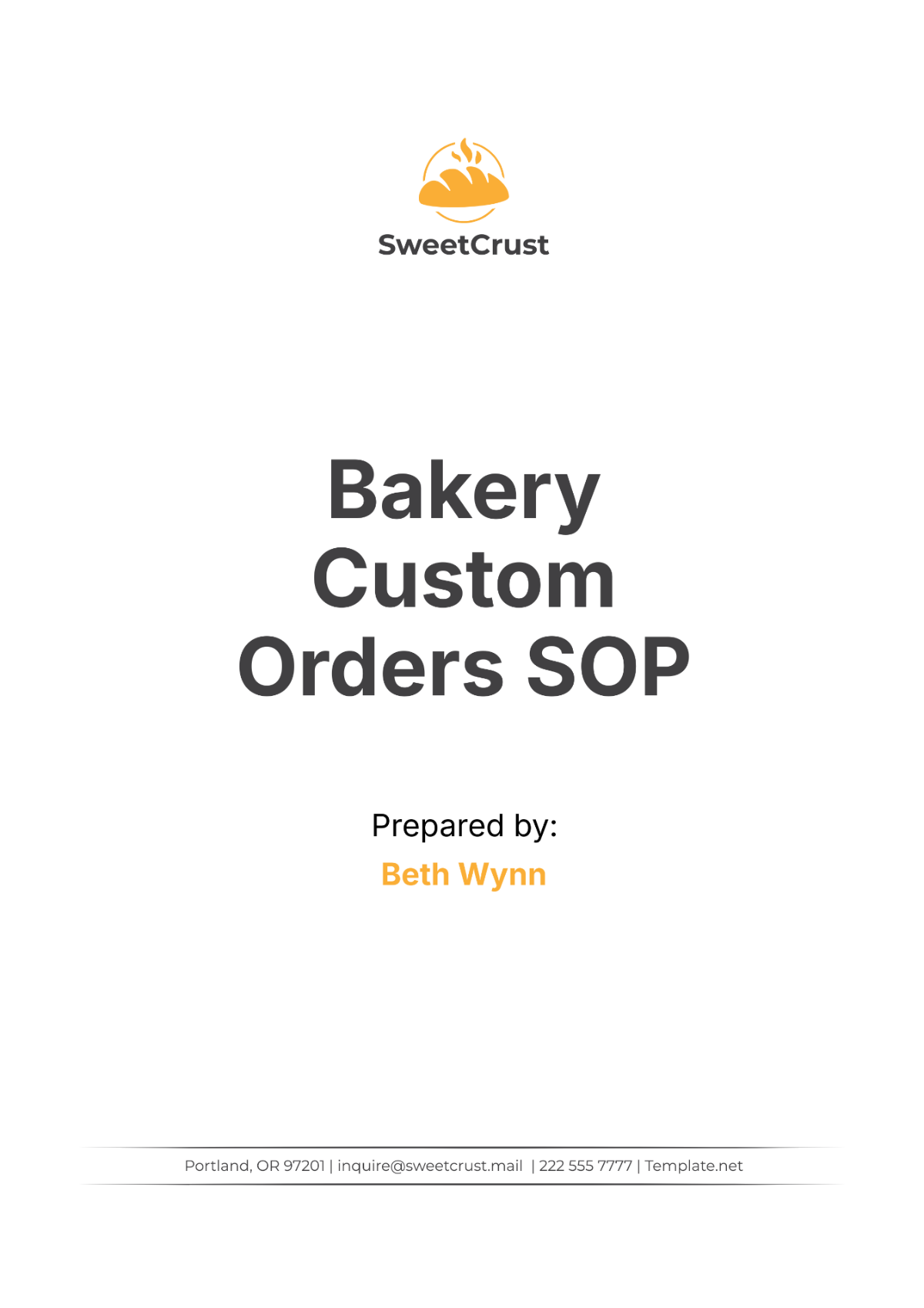Architecture Safety SOP
I. Introduction
The Safety Standard Operating Procedure (SOP) of [Your Company Name] is a comprehensive document that outlines the safety protocols and procedures to be followed in our architectural firm. This SOP is designed to ensure the safety and well-being of all personnel involved in our architectural projects. It serves as a guide for maintaining a safe working environment and promotes a culture of safety within our organization.
A. Purpose
The primary purpose of this SOP is to establish standardized safety procedures and protocols. These guidelines are designed to mitigate risks and ensure the well-being of all personnel involved in architectural projects at [Your Company Name]. By adhering to these procedures, we aim to prevent accidents and injuries, thereby creating a safe and secure work environment for everyone.
B. Scope
This SOP is comprehensive and applies to all projects, activities, and personnel engaged in architectural work under [Your Company Name]. It covers all aspects of our operations, from the initial design phase to the final construction phase. It is mandatory for all employees, contractors, and stakeholders to understand and adhere to these safety protocols.
II. Responsibilities
The successful implementation of safety protocols requires the active participation and commitment of all personnel. Each role has specific responsibilities that contribute to the overall safety of our operations:
A. Project Managers
Project Managers play a crucial role in ensuring the safety of our architectural projects. Their responsibilities include:
Ensuring Safety On-Site: Project Managers are responsible for ensuring that all safety protocols are followed on-site. They must ensure that all personnel are aware of and adhere to the safety guidelines.
Conducting Safety Audits and Inspections: Regular safety audits and inspections are essential to identify potential hazards and ensure compliance with safety standards. Project Managers are responsible for conducting these audits and inspections.
Reporting Safety Incidents: In the event of a safety incident, Project Managers must promptly report the incident to the relevant authorities. This allows for immediate action to be taken to mitigate the impact of the incident and prevent similar occurrences in the future.
B. Architects and Designers
Architects and Designers have a significant role in ensuring the safety of our projects. Their responsibilities include:
Incorporating Safety Measures into Designs and Plans: Safety should be a primary consideration in the design process. Architects and Designers are responsible for incorporating safety measures into their designs and plans.
Verifying Compliance with Safety Standards: All materials and methods used in our projects must comply with safety standards. Architects and Designers are responsible for verifying this compliance.
C. Construction Workers
Construction Workers are at the forefront of our operations and their safety is of utmost importance. Their responsibilities include:
Following Safety Instructions and Using Personal Protective Equipment (PPE): Construction Workers must follow all safety instructions and use the appropriate PPE to protect themselves from potential hazards.
Reporting Unsafe Conditions: If a Construction Worker identifies an unsafe condition, they must report it to their supervisor immediately. This allows for prompt action to be taken to rectify the situation and prevent potential accidents.
III. Safety Procedures
A. Design Phase
The design phase is a critical stage in any architectural project. It’s during this phase that safety measures are incorporated into the project plans. The following table outlines the key safety procedures to be followed during the design phase:
No. | Step | Description |
|---|---|---|
1. | Safety Analysis | Conduct a thorough safety analysis of the proposed design. Identify potential hazards and incorporate measures to mitigate these risks. |
2. | Material Selection | Select materials that are safe and comply with safety standards. Avoid materials that pose a risk to the health and safety of personnel. |
3. | Design Review | Conduct a design review to ensure that all safety measures have been incorporated and that the design complies with safety standards. |
4. | Safety Approval | Obtain safety approval for the design from the relevant authorities. This ensures that the design meets all safety requirements. |
5. | Documentation | Document all safety measures and procedures. This documentation will serve as a reference during the construction phase. |
The design phase is crucial as it sets the foundation for the safety of the entire project. It is during this phase that potential hazards are identified and safety measures are incorporated into the design. The steps outlined in the table above ensure that safety is considered at every stage of the design process. By conducting a thorough safety analysis, selecting safe materials, reviewing the design for safety, obtaining safety approval, and documenting all safety measures, we can ensure that our projects are designed with safety in mind.
The steps outlined not only ensure the safety of our projects but also contribute to their overall success. A design that has been thoroughly reviewed for safety is more likely to be approved by authorities, run smoothly during the construction phase, and result in a safe and secure structure. Therefore, adhering to these safety procedures is not just a matter of compliance, but a key factor in the successful completion of our projects.
B. Construction Phase
The construction phase is where the design comes to life. It’s also the phase where most accidents can occur if safety procedures are not strictly followed. The following table outlines the key safety procedures to be followed during the construction phase:
No. | Step | Description |
|---|---|---|
1. | Safety Briefing | Conduct a safety briefing before the start of construction. Ensure that all personnel are aware of the safety procedures and understand their responsibilities. |
2. | Use of PPE | Ensure that all personnel are equipped with the appropriate PPE and know how to use it correctly. |
3. | Safety Inspections | Conduct regular safety inspections to identify potential hazards and ensure that safety measures are being followed. |
4. | Incident Reporting | Establish a system for reporting safety incidents. This allows for immediate action to be taken in the event of an accident. |
5. | Safety Audits | Conduct regular safety audits to assess the effectiveness of the safety measures in place and identify areas for improvement. |
6. | Safety Training | Provide ongoing safety training to all personnel. This ensures that everyone is up-to-date with the latest safety procedures and techniques. |
The construction phase is a critical stage in any architectural project. It’s during this phase that the design becomes a reality, and it’s also the phase where most accidents can occur if safety procedures are not strictly followed. The steps outlined in the table above ensure that safety is prioritized throughout the construction process. By conducting safety briefings, ensuring the use of PPE, carrying out regular safety inspections and audits, establishing an incident reporting system, and providing ongoing safety training, we can maintain a safe and secure construction site.
Moreover, the construction phase is the stage that the design becomes a reality, and it’s also the phase where most accidents can occur if safety procedures are not strictly followed. The steps above ensure that safety is prioritized throughout the construction process. By conducting safety briefings, ensuring the use of PPE, carrying out regular safety inspections and audits, establishing an incident reporting system, and providing ongoing safety training, we can maintain a safe and secure construction site.
IV. Emergency Procedures
In the event of an emergency, it’s crucial that all personnel know what to do. The following steps outline our emergency procedures:
A. Evacuation
In the event of an emergency, all personnel must evacuate the site immediately following the designated evacuation routes. This ensures everyone’s safety and prevents further injuries. The evacuation process involves the following steps:
Alarm Activation: Upon detection of an emergency situation, the alarm should be activated immediately. This serves as a signal for all personnel to start the evacuation process.
Evacuation Initiation: All personnel should stop their work immediately and move towards the nearest exit in a calm and orderly manner. Running or panic can lead to accidents and should be avoided.
Use of Designated Routes: All personnel should follow the designated evacuation routes. These routes are designed to provide the quickest and safest path out of the building.
Assistance to Others: If safe to do so, personnel should assist others who may need help during the evacuation.
Avoidance of Elevators: Elevators should not be used during an evacuation as they may become inoperable or unsafe.
B. Headcount
Once evacuated, a headcount must be conducted at the assembly point. This allows us to quickly identify if anyone is missing and needs assistance. The headcount process involves the following steps:
Assembly at Designated Area: All personnel should assemble at the designated area after evacuation. This area should be a safe distance away from the building.
Roll Call: A roll call should be conducted to account for all personnel. Each person should respond when their name is called.
Reporting of Missing Persons: If anyone is missing, this should be reported to the emergency services immediately.
Stay Until Dismissed: All personnel should stay at the assembly point until dismissed by the relevant authority.
C. Contacting Emergency Services
After ensuring everyone’s safety, the next step is to contact emergency services and provide them with the details of the incident. This allows them to respond appropriately and provide any necessary assistance. The process involves the following steps:
Dial Emergency Number: Dial the local emergency number as soon as it is safe to do so.
Provide Details: Provide the operator with details of the incident, including the location, the nature of the emergency, and any known injuries or dangers.
Follow Instructions: Follow the instructions given by the operator. They are trained to provide guidance in emergency situations.
Stay on the Line: Stay on the line until the operator ends the call. They may need additional information or provide further instructions.
V. Training and Communication
Training and communication are key to maintaining a safe working environment. All personnel must undergo mandatory safety training sessions before commencing work. These sessions provide them with the knowledge and skills they need to work safely and effectively. In addition, regular safety meetings will be held to address any concerns. This ensures that everyone is on the same page when it comes to safety and that any issues are addressed promptly.
A. Safety Training
Safety training is a crucial part of our safety procedures. All personnel must undergo mandatory safety training sessions before commencing work. The training process involves the following steps:
Training Needs Assessment: Identify the safety training needs of each individual based on their role and responsibilities. This ensures that the training is relevant and effective.
Training Program Development: Develop a comprehensive safety training program that covers all necessary topics. This includes understanding safety procedures, using safety equipment, and responding to emergencies.
Training Delivery: Deliver the training using effective methods such as classroom training, online courses, and practical demonstrations. This ensures that all personnel understand and can apply the safety procedures.
Training Evaluation: Evaluate the effectiveness of the training by assessing the participants’ knowledge and skills after the training. This helps to identify any gaps in understanding and areas for improvement in the training program.
Refresher Training: Provide refresher training at regular intervals to ensure that all personnel are up-to-date with the latest safety procedures and techniques.
B. Safety Meetings
Regular safety meetings are an important platform for communication about safety matters. These meetings provide an opportunity to address any concerns, discuss safety incidents, and update procedures as necessary. The process for conducting safety meetings includes the following steps:
Meeting Schedule: Schedule regular safety meetings. The frequency of these meetings may depend on the nature of the work and the level of risk involved.
Agenda Preparation: Prepare an agenda for each meeting. This should include items such as discussion of recent safety incidents, updates to safety procedures, and any concerns raised by personnel.
Meeting Conduct: Conduct the meeting in a manner that encourages open and honest communication. All personnel should feel comfortable raising concerns and suggestions.
Action Items: Identify action items from the meeting and assign responsibility for these items. This ensures that issues are addressed promptly.
Meeting Minutes: Document the minutes of the meeting, including the discussion points and action items. This serves as a record of the meeting and helps to track progress on action items.
VI. Reporting and Record Keeping
Reporting and record keeping are essential components of our safety procedures. All incidents, no matter how minor, must be reported. This allows us to identify trends, address issues, and prevent similar incidents from occurring in the future. In addition, we maintain records of all safety audits, inspections, and incident reports. These records provide us with valuable data that we can use to improve our safety procedures and protocols.
A. Incident Reporting
Incident reporting is a crucial part of our safety procedures. The process for incident reporting involves the following steps:
Incident Identification: The first step in incident reporting is to identify the incident. This involves recognizing when a safety incident has occurred and understanding the need to report it.
Incident Documentation: Once an incident has been identified, it should be documented. This involves recording the details of the incident, including what happened, when and where it happened, who was involved, and any other relevant information.
Incident Reporting: After documenting the incident, it should be reported to the appropriate authority within [Your Company Name]. This ensures that the incident is brought to the attention of those who can address it.
Incident Review: Once reported, the incident should be reviewed. This involves analyzing the incident to understand why it happened and how it could have been prevented.
Incident Follow-Up: After the review, any necessary follow-up actions should be taken. This could include implementing new safety measures, providing additional training, or making changes to existing procedures.
B. Safety Audits and Inspections
Safety audits and inspections are key tools for maintaining a safe working environment. The process for conducting safety audits and inspections includes the following steps:
Audit and Inspection Planning: The first step in conducting a safety audit or inspection is to plan it. This involves determining what will be audited or inspected, when and how the audit or inspection will be conducted, and who will conduct it.
Conducting the Audit or Inspection: The next step is to conduct the audit or inspection. This involves examining the workplace, equipment, and procedures to identify any potential hazards or non-compliance with safety standards.
Documenting the Findings: After conducting the audit or inspection, the findings should be documented. This involves recording any hazards or non-compliance identified, as well as any recommendations for improvement.
Reviewing the Findings: The findings should then be reviewed. This involves analyzing the findings to understand their implications and determine the necessary corrective actions.
Implementing Corrective Actions: The final step is to implement the corrective actions identified during the review. This could involve making changes to the workplace, equipment, or procedures to eliminate hazards or improve compliance with safety standards.
C. Record Keeping
Record keeping is an important part of our safety procedures. The process for record keeping involves the following steps:
Record Creation: The first step in record keeping is to create the record. This involves documenting the details of the safety audit, inspection, or incident report.
Record Review: The next step is to review the record. This involves checking the record for accuracy and completeness.
Record Storage: After reviewing the record, it should be stored in a secure location. This ensures that the record is preserved and can be accessed when needed.
Record Retrieval: When needed, the record should be retrieved. This could be for the purpose of reviewing past incidents, conducting trend analysis, or providing evidence of compliance with safety standards.
Record Disposal: Finally, when a record is no longer needed, it should be disposed of in a secure manner. This ensures that the information in the record is not misused or disclosed inappropriately.
VII. Review and Revision
Our SOP is a living document that is reviewed annually and revised as needed. This ensures that our safety procedures and protocols remain up-to-date and in line with the latest safety standards and regulations. By regularly reviewing and revising our SOP, we can continue to improve our safety performance and maintain a safe and healthy working environment for all personnel.
A. Annual Review
An annual review of our SOP is conducted to ensure that our safety procedures and protocols remain relevant and effective. The process for the annual review involves the following steps:
Review Initiation: The review process is initiated at a predetermined time each year. This ensures that our SOP is reviewed regularly and kept up-to-date.
Review Team Formation: A review team is formed, consisting of individuals with knowledge and experience in safety procedures and protocols. This team is responsible for conducting the review.
Document Review: The review team goes through the SOP, examining each section for accuracy, relevance, and effectiveness. They identify any areas that may need updating or revising.
Recommendations: Based on their review, the team makes recommendations for changes to the SOP. These recommendations are documented and presented to the relevant authorities for approval.
Implementation of Changes: Once the recommendations have been approved, the changes are implemented in the SOP. This may involve rewriting sections, adding new information, or removing outdated information.
B. Revision as Needed
In addition to the annual review, our SOP is revised as needed. This allows us to make changes to our safety procedures and protocols in response to new information, changes in regulations, or feedback from personnel. The process for revision involves the following steps:
Need Identification: The need for a revision can be identified through various means, such as feedback from personnel, changes in regulations, or new information about safety procedures.
Revision Proposal: Once a need has been identified, a proposal for revision is made. This proposal outlines the changes to be made and the reasons for these changes.
Proposal Review: The proposal is reviewed by the relevant authorities. They assess the proposed changes and their impact on safety procedures and protocols.
Approval and Implementation: If the proposal is approved, the changes are implemented in the SOP. This involves updating the relevant sections with the new information.
Communication of Changes: Once the changes have been implemented, they are communicated to all personnel. This ensures that everyone is aware of the changes and understands the updated procedures and protocols.
C. Compliance with Regulations
Our SOP is designed to comply with the latest safety standards and regulations. We regularly review and revise our SOP to ensure that it remains in compliance. The process for ensuring compliance involves the following steps:
Regulation Monitoring: We continuously monitor safety standards and regulations. This allows us to stay informed about any changes or updates.
Compliance Assessment: We assess our SOP for compliance with these standards and regulations. This involves comparing our procedures and protocols with the requirements outlined in the regulations.
Non-Compliance Identification: If any areas of non-compliance are identified, these are documented and addressed.
Corrective Action: We take corrective action to address areas of non-compliance. This may involve revising our SOP or implementing new procedures.
Verification of Compliance: After taking corrective action, we verify that we are now in compliance with the regulations. This involves reassessing our SOP and confirming that the areas of non-compliance have been addressed.
